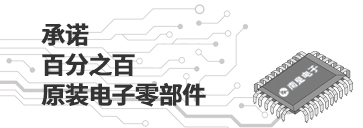

SN74GTL16622A是TI公司的一款无产品,SN74GTL16622A是18 位 LVTTL 到 GTL/GTL+ 总线收发器,本页介绍了SN74GTL16622A的产品说明、应用、特性等,并给出了与SN74GTL16622A相关的TI元器件型号供参考。
SN74GTL16622A - 18 位 LVTTL 到 GTL/GTL+ 总线收发器 - 无 - 背板逻辑器件(GTL/TTL/BTL/ECL收发器/转换器) - TI公司(Texas Instruments,德州仪器)
The SN74GTL16622A is an 18-bit registered bus transceiver that provides LVTTL-to-GTL/GTL+ and GTL/GTL+-to-LVTTL signal-level translation. This device is partitioned as two separate 9-bit transceivers with individual clock-enable controls and contains D-type flip-flops for temporary storage of data flowing in either direction. This device provides an interface between cards operating at LVTTL logic levels and a backplane operating at GTL/GTL+ signal levels. Higher speed operation is a direct result of the reduced output swing (<1 V), reduced input threshold levels, and OEC™ circuitry.
The user has the flexibility of using this device at either GTL (VTT = 1.2 V and VREF = 0.8 V) or the preferred higher noise margin GTL+ (VTT = 1.5 V and VREF = 1 V) signal levels. GTL+ is the Texas Instruments derivative of the Gunning Transceiver Logic (GTL) JEDEC standard JESD 8-3. The B port normally operates at GTL or GTL+ signal levels, while the A-port and control inputs are compatible with LVTTL logic levels and are 5-V tolerant. VREF is the reference input voltage for the B port.
Data flow in each direction is controlled by the output-enable (OEAB\ and OEBA\) and clock (CLKAB and CLKBA) inputs. The clock-enable (CEAB\ and CEBA\) inputs control each 9-bit transceiver independently, which makes the device more versatile. For A-to-B data flow, the device operates on the low-to-high transition of CLKAB if CEAB\ is low. When OEAB\ is low, the outputs are active. When OEAB\ is high, the outputs are in the high-impedance state. Data flow for B to A is similar to that of A to B, but uses OEBA\, CLKBA, and CEBA\.
This device is fully specified for partial-power-down applications using Ioff. The Ioff circuitry disables the outputs, preventing damaging current backflow through the device when it is powered down.
Active bus-hold circuitry holds unused or undriven LVTTL inputs at a valid logic state. Use of pullup or pulldown resistors with the bus-hold circuitry is not recommended.
To ensure the high-impedance state during power up or power down, OE\ should be tied to VCC through a pullup resistor; the minimum value of the resistor is determined by the current-sinking capability of the driver.
- Member of Texas Instruments' Widebus™ Family OEC™ Circuitry Improves Signal Integrity and Reduces Electromagnetic Interference
- D-Type Flip-Flops With Qualified Storage Enable
- Translates Between GTL/GTL+ Signal Levels and LVTTL Logic Levels
- Supports Mixed-Mode (3.3 V and 5 V) Signal Operation on A-Port and Control Inputs
- Ioff Supports Partial-Power-Down Mode Operation
- Bus Hold on Data Inputs Eliminates the Need for External Pullup/Pulldown Resistors on A Port
- Distributed VCC and GND Pins Minimize High-Speed Noise
- Latch-Up Performance Exceeds 250 mA Per JESD 17
- ESD Protection Exceeds JESD 22
- 2000-V Human-Body Model (A114-A)
- 200-V Machine Model (A115-A)
- 1000-V Charged-Device Model (C101)
OEC and Widebus are trademarks of Texas Instruments.






